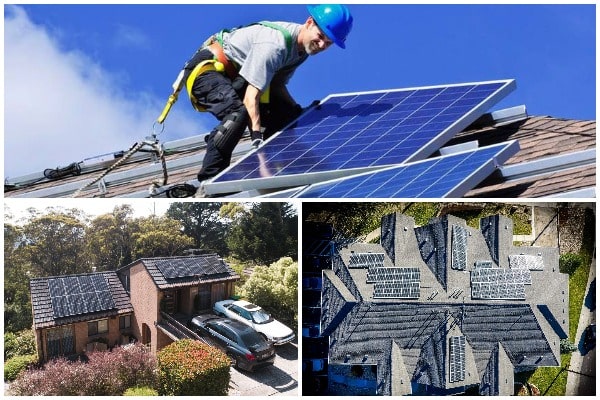Solar energy stands out as a shining star for sustainable and renewable energy sources. Harnessing the sun’s power, solar energy has rapidly gained popularity as an environmentally friendly and cost-effective solution to our ever-growing energy needs. This comprehensive guide explores the fundamentals of solar energy, how it works, its benefits, and its future potential.

The Basics of Solar Energy
At its core, solar energy is the radiant energy emitted by the sun. This energy is harnessed using photovoltaic (PV) cells or solar panels and then converted into electricity or used for heating. Solar power has been harnessed for centuries, but modern solar panels have revolutionized how we use this abundant and renewable resource. Solar panels are the heart of a solar energy system. They are made up of many solar cells, which are typically composed of semiconductor materials such as silicon. These cells utilize the photovoltaic effect, where certain materials can generate an electric current when exposed to sunlight.
Many homeowners install solar batteries to ensure a continuous power supply. Solar batteries store excess electricity generated during the day for use at night or during periods of low sunlight. The seasoned providers of Australia’s affordable solar solutions recommend using solar batteries as a valuable addition to any solar energy system. These batteries offer several advantages, contributing to your solar power setup’s overall efficiency and reliability. The most commonly used solar batteries include lithium-ion and lead-acid batteries. These batteries store energy efficiently and release it when needed, providing a reliable source of electricity even when the sun is unavailable.
Benefits of Solar Energy
- Renewable and Sustainable: The sun is an abundant and virtually infinite energy source. Solar energy will never run out for as long as the sun continues to shine, unlike fossil fuels, which are finite.
- Environmentally Friendly: Solar power generation produces zero emissions, reducing air and water pollution, mitigating climate change. Everyone can significantly reduce their carbon footprint by choosing solar energy.
- Low Operating Costs: Solar panels have minimal operating and maintenance costs once installed. Regular cleaning and occasional inspections are sufficient to keep the system running efficiently.
- Energy Independence: Solar energy can provide energy independence by allowing homeowners and businesses to generate electricity. This reduces reliance on utility companies and the vulnerability to power outages.
- Financial Incentives: Many governments and local authorities offer financial incentives, encouraging the adoption of solar energy. These incentives can include tax credits, rebates, and net metering programs, making solar installations more affordable.
- Long-Term Investment: Solar panels usually have a long lifespan, often exceeding 25 years, and their value can increase a property’s resale value. They can be considered a sound long-term investment.
Considerations Before Going Solar
Before diving into the world of solar energy, several key considerations must be remembered. The amount of sunlight your location receives is a crucial element in forecasting the effectiveness of your solar panels. Areas with more sunlight will generate more electricity. Consider factors like shading, local climate, and the orientation of your solar panels. Evaluate your energy consumption patterns. Understanding your energy needs will help determine the size of the solar panel system you need. You can start by examining your past utility bills to gauge your average usage.
Solar panel installations require an upfront investment. Determine your budget and explore financing options, including loans, leases, or power purchase agreements (PPAs). Choose the correct type of solar panels based on your specific needs and budget. Monocrystalline panels are efficient but more expensive, while polycrystalline and thin-film panels are more budget-friendly. Hiring a reputable solar installer is crucial for a successful solar project. Research local installers, check their certifications, and read reviews from previous customers. Also, be prepared for occasional maintenance like cleaning and inspections.
Also Read: 4 Reasons Why Solar Panels Can Increase the Value of Your Property
The Solar Installation Process
Once you’ve decided to go solar and completed the necessary preparations, it’s time to embark on the solar installation journey. A site assessment will be conducted to evaluate your property’s suitability for solar panels. They will consider factors like shading, roof condition, and the angle of your roof.
Based on the site assessment and your energy needs, the installer will design a solar panel system tailored to your property. This includes determining the number of panels and their placement. Once the necessary permits are in place, the solar panels and associated equipment will be installed on your property. This typically takes a few days to a week, depending on the size of the system.
Solar energy is a sustainable and economically viable solution to energy needs. Whether you’re considering going solar for your home or business or simply want to learn more about this remarkable energy source, understanding the basics of solar energy is the first step towards a more sustainable and bright future. As technology advances and the world embraces renewable energy, solar power will undoubtedly play a significant role in shaping our energy landscape.